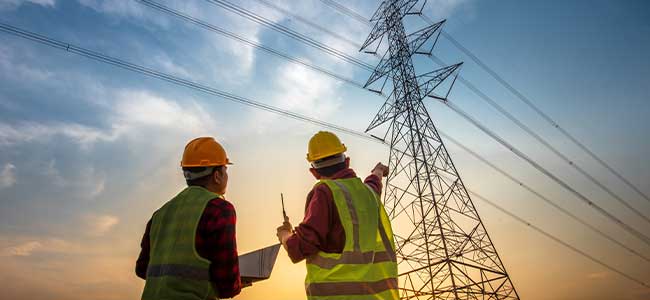
Strengthening Energy Grids to Withstand Natural Disasters
Strengthening energy grids to withstand natural disasters is crucial as climate change intensifies extreme weather, leading to more frequent and prolonged power outages, and the aging infrastructure struggles to keep pace with rising energy demands.
- By Jane Marsh
- Sep 13, 2024
Nowadays, you can’t turn on the news without hearing about a natural disaster or severe weather conditions. These events can cause widespread power outages for hours and even days.
The United States’ energy grid is no longer a sound enough infrastructure to withstand significant storm systems — nor can it handle the increased energy demands of the population’s air conditioners in a heat wave.
Are natural disasters battering the grid more than ever, or is it simply time for structural updates? Here is why the world must strengthen its energy grids before it’s too late.
The Impact of Natural Disasters on Energy Grids
When Hurricane Maria decimated Puerto Rico in 2017, it knocked out power for 328 days — 11 months — making it the most prolonged blackout throughout U.S. history.
Factors including population growth, extreme temperatures and more widespread use of electric vehicles have led to a growing reliance on electricity. When storms roll through, the overloaded grids struggle to maintain their outputs, shrouding thousands of households and businesses in darkness.
According to the Federal Emergency Management Agency, severe weather is the primary cause of power outages in the U.S. In fact, 83% of power outages from 2000 to 2021 were due to extreme weather conditions.
From 2017 to 2020, 39.9% of outages in New York occurred during heat, rain and windstorms, disproportionately affecting communities in the Hudson Valley, Adirondack region, Queens, Manhattan and the Bronx.
Aging infrastructure also contributes to outages. Nearly 70% of transmission lines are over 25 years old, posing a severe health crisis for people in heat-ridden climates. When grid failures occur during heat waves, older adults and those with chronic medical conditions are among the highest mortality risk.
Is Climate Change Intensifying Extreme Weather?
Extreme weather conditions have intensified in recent years, with experts blaming human-induced climate change. The U.S. Environmental Protection Agency says nine out of the 10 warmest summers ever recorded have occurred since 1998, while annual heat waves are three times more prevalent today than in the 1960s.
Tropical cyclones are also more frequent and intense than ever, causing major disturbances to the power grid. Forecasters with the National Weather Service anticipate this year’s hurricane season will be 85% above average due to warmer temperatures, lower Atlantic trade winds and La Nina conditions in the Pacific.
Hurricane Beryl — the first hurricane of the 2024 Atlantic season and the earliest Category 5 cyclone on record — broke several records as it barreled through the Caribbean and Gulf Coast in June, leaving many without power.
How to Strengthen Energy Grids to Withstand the Storm
Without an end to the climate crisis in sight, engineers must work on strengthening the energy grid to withstand extreme weather events and natural disasters. Here are three strategies they can take to keep the power on.
-
Upgrade the Infrastructure
Widespread upgrades to deteriorating infrastructure are the obvious approach to a more robust energy grid. In May 2024, the Biden administration announced the launch of the Federal-State Modern Grid Deployment Initiative, which comprises 21 states adopting modern solutions to boost grid capacity.
The upgrades include high-performing conductors to duplicate electricity outputs and enhance the existing transmission lines. Ultimately, grid specialists will have an easier time integrating renewable energy sources to address power overloads.
Microgrids are small-scale electric grids capable of operating separately from the primary grid. They rely on solar energy, which they store and discharge as needed. Like rooftop solar panels, they supply consistent electricity to homes, hospitals, and businesses connected to them.
Two microgrids kept electricity running for nine days in Adjuntas, Puerto Rico, when Hurricane Fiona knocked the power out in September 2022. Elsewhere, they’ve proven effective in ensuring ongoing energy during grid failures.
-
Integrate Smart Grid Technology
Smart grids utilize digital sensors and software to meet energy demands in real time, helping to reduce costs while facilitating the transition toward renewables.
According to the International Energy Agency, smart grid investments must double by 2030 for a net-zero achievement by midcentury. So far, China and Japan are leading the deployment of smart meters, followed by the U.S.
The U.S. has invested $10.5 billion in the Grid Resilience and Innovation Partnerships Program to increase grid resilience. Three billion dollars are set aside for grants to build smart grids and boost transmission capacity, preventing power disruptions from natural disasters.
A Resilient Energy Grid Demands Advancement
Climate-induced natural disasters will continue to strain the energy grid, while consumer demand will keep rising. This means nations must strengthen grid resilience to withstand storms and protect public health and safety.
About the Author
Jane Marsh is an environmental writer. You can keep up with her work on her site Environment.co.